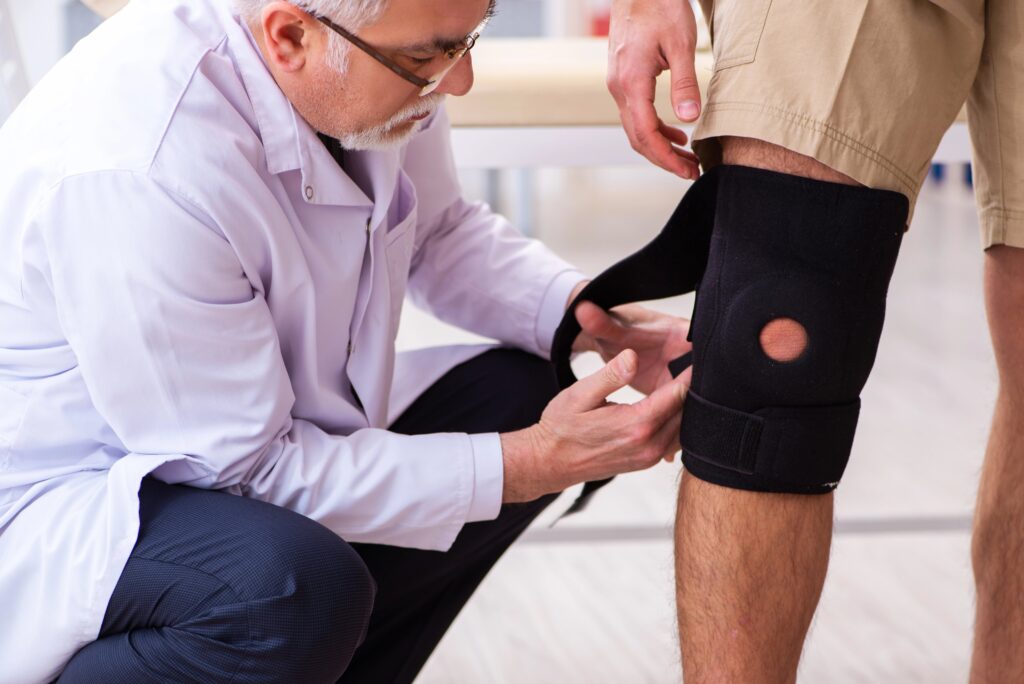Understanding Total Knee Replacement
Total knee replacement (TKR) is a surgical procedure designed to replace damaged or worn-out knee joints with artificial implants. This procedure is typically recommended for individuals suffering from severe arthritis, joint degeneration, or knee injuries that significantly affect mobility and quality of life. Patients undergoing TKR can expect reduced pain, improved joint function, and a better ability to perform daily activities such as walking, climbing stairs, and participating in physical activities. The surgery involves removing damaged cartilage and bone from the knee joint and replacing it with metal and plastic components. Candidates for TKR are generally adults who have exhausted conservative treatments like medication, injections, or physical therapy without sufficient relief. The recovery period varies depending on age, health condition, and adherence to post-surgery rehabilitation protocols. Understanding the procedure, its benefits, and realistic expectations is the first step toward making an informed decision about total knee replacement abroad.
Why Consider Having Knee Replacement Surgery Abroad
One of the main reasons patients explore total knee replacement abroad is the rising cost of surgery in their home countries, particularly in the United States. Domestic knee replacement procedures can cost tens of thousands of dollars, often leaving patients with substantial out-of-pocket expenses even with insurance coverage. Many international hospitals offer high-quality knee replacement surgeries at a fraction of the domestic price without compromising care standards. Shorter waiting times abroad are another significant advantage, as patients in some countries face long delays for elective surgeries. Access to specialized surgeons and state-of-the-art technology is also more widely available in certain medical tourism destinations. Some patients choose international surgery to combine treatment with travel, allowing them to recover in a comfortable, supportive environment. These benefits make considering total knee replacement abroad an attractive option for those seeking cost-effective and timely care.
Popular Destinations for Total Knee Replacement Abroad
Several countries have earned reputations for excellence in orthopedic care, attracting international patients for total knee replacement surgeries. India, Thailand, Turkey, Mexico, and South Korea are among the top destinations for high-quality TKR procedures. Hospitals in these countries often have international accreditations, such as Joint Commission International (JCI), ensuring adherence to global medical standards. Surgeons in these regions frequently have advanced training and experience performing thousands of knee replacement procedures. Patients can access modern facilities, advanced imaging technologies, and comprehensive post-operative care programs. Many hospitals also provide international patient coordinators to assist with language translation, travel logistics, and personalized care. Understanding which destinations offer the best combination of affordability, quality, and convenience can guide patients toward making a safe and informed choice.
Cost Comparison: Abroad vs. Domestic
The cost of total knee replacement varies significantly depending on location. In the United States, a single knee replacement can cost between $35,000 and $70,000, depending on the hospital, surgeon, and insurance coverage. In contrast, countries like India and Thailand offer TKR procedures for $7,000 to $15,000, including surgery, hospitalization, and initial rehabilitation. Many hospitals abroad provide bundled packages that cover pre-operative tests, post-operative care, and even travel accommodations. These savings can make it possible for patients to afford higher-quality care or multiple treatments without financial strain. When considering cost, it is essential to account for additional expenses such as flights, visas, travel insurance, and accommodations. Comparing total costs versus domestic surgery expenses helps patients make financially informed decisions while still prioritizing medical quality.
Planning Your Surgery Abroad
Planning total knee replacement abroad requires careful research and preparation. Start by researching hospitals, surgeons, and international accreditations to ensure you receive safe, high-quality care. Gathering your medical records, imaging, and diagnostic reports is essential for surgeons to assess your eligibility for the procedure. Patients should also review travel requirements, including visas, health insurance coverage, and COVID-19 or vaccination protocols if applicable. It is helpful to communicate directly with the hospital’s international patient department to understand pre-operative procedures, hospital stay duration, and rehabilitation plans. Consulting with your local physician before traveling ensures continuity of care and addresses any potential medical risks. Proper planning reduces stress and allows for a smoother surgery and recovery experience abroad.
The Surgery and Hospital Experience Abroad
Total knee replacement surgery abroad generally follows the same medical protocols as in the U.S., but the patient experience can vary based on the hospital and country. Before surgery, patients undergo consultations, blood tests, imaging, and pre-operative evaluations to ensure they are medically fit. During hospitalization, many international hospitals provide private rooms, attentive nursing care, and multilingual staff to assist patients throughout their stay. Surgeons use advanced techniques such as minimally invasive surgery or robotic-assisted procedures to improve accuracy and reduce recovery time. Post-surgery, patients are closely monitored for pain management, infection prevention, and joint function. Hospital stays typically last three to five days, depending on the procedure and patient recovery rate. Discharge includes guidance on physical therapy, medications, and follow-up consultations to ensure a smooth transition home.
Recovery and Rehabilitation After Surgery Abroad
Recovery after total knee replacement is a critical phase that impacts long-term success and mobility. Early-stage recovery usually involves gentle movements, walking with support, and exercises to prevent stiffness. Physical therapy is essential and may begin in the hospital and continue locally after returning home. Patients are advised to follow strict post-operative instructions, including weight-bearing guidelines, medication schedules, and wound care. Continuing rehabilitation ensures improved range of motion, stronger muscles around the knee, and reduced risk of complications. Some international hospitals offer tele-rehabilitation or coordination with local therapists to support patients remotely. Patients should also monitor for any unusual symptoms such as swelling, fever, or persistent pain and report them promptly. Consistent adherence to rehabilitation programs leads to better mobility, long-lasting results, and overall satisfaction with total knee replacement abroad.
Risks and Considerations
While total knee replacement abroad offers many advantages, patients must consider potential risks and challenges. Surgical risks such as infection, blood clots, and implant failure exist, similar to domestic procedures. Travel-related factors like long flights, limited emergency care access, or language barriers can also impact the overall experience. Patients should thoroughly research hospitals and surgeons, verify certifications, and ensure they have medical insurance that covers international care. Communication with the medical team before and after surgery is vital to minimize misunderstandings. Additionally, evaluating post-surgery support, rehabilitation facilities, and follow-up care options ensures better outcomes. Awareness and proactive planning reduce risks and increase confidence in seeking surgery abroad.
How to Choose the Right Clinic or Surgeon Abroad
Selecting the right hospital or surgeon is one of the most important decisions when considering total knee replacement abroad. Experience, certifications, and the number of successful surgeries performed are key indicators of a surgeon’s expertise. Hospitals with international accreditation, patient testimonials, and advanced medical technology are generally safer choices. Multilingual staff and international patient departments help facilitate communication, travel arrangements, and post-operative care. Patients should request virtual consultations to ask detailed questions about procedure options, recovery timelines, and potential complications. Verifying hospital infrastructure, including ICU availability and infection control measures, adds another layer of safety. Taking the time to research and compare options ensures a positive surgery experience and optimal results.
FAQs
How much does total knee replacement cost abroad on average?
The cost typically ranges from $7,000 to $15,000, depending on the country, hospital, and surgeon. This often includes surgery, hospitalization, and initial post-operative care.
Is traveling abroad for knee replacement safe?
With thorough research, accredited hospitals, and experienced surgeons, traveling abroad for TKR can be safe. Choosing reputable facilities with international recognition is essential.
How long should I stay in the country after surgery?
Most patients stay three to five days in the hospital and may remain in the country for an additional one to two weeks for initial recovery and physical therapy.
Will my health insurance cover surgery abroad?
Coverage varies. Some U.S. insurance providers offer partial or full reimbursement for international procedures, while others may not. It’s crucial to confirm with your insurer beforehand.
How do I manage follow-up care after returning home?
Coordination with your local physician and physical therapist is essential. Many hospitals abroad offer telemedicine follow-ups to ensure continuity of care.









